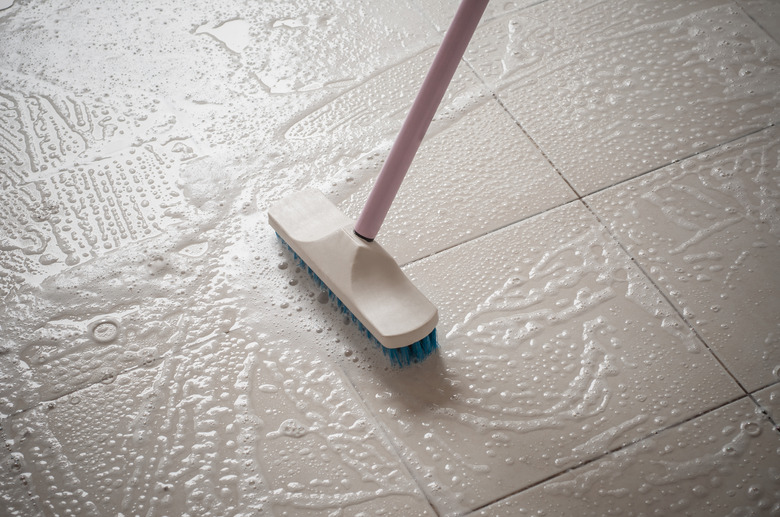What Are The Differences Between Bleach And Chlorine?
Bleach refers to many products with applications ranging from whitening laundry to killing germs to making paper. Bleaches work by altering chemical compounds, either adding oxygen by the process called oxidation, or by removing oxygen by the process called reduction. Chlorine is a component of some kinds of bleaches, though not all of them.
TL;DR (Too Long; Didn't Read)
Chlorine is a chemical element present in many bleach compounds. Common bleach is a solution of sodium hypochlorite in water, with other kinds also widely available.
Properties of Elemental Chlorine
Properties of Elemental Chlorine
Heavier than air, chlorine is a pure chemical element, a greenish-yellow gas that readily combines with most other elements. It is toxic in small concentrations, especially with longer exposure times. Chlorine gas reacts with moisture in the respiratory system to create hypochlorous and hydrochloric acids on tissues, along with oxidants and enzymes that break down proteins. When a chlorine atom gains an electron, it becomes chloride, a stable ion that exists in ionic bonds with positive ions such as sodium, potassium and calcium.
Properties of Chlorine in Bleach Products
Properties of Chlorine in Bleach Products
Common household laundry bleach is sodium hypochlorite, NaOCl, diluted in water to a 3 – 6 percent solution. Other solutions of sodium hypochlorite find applications from bleaching paper to sanitizing medical and food preparation equipment to water treatment. It's an eye and skin irritant, which is why swimming pool water can make your eyes burn. When mixed with ammonia, bleach releases chloramine gas, which is extremely toxic. (If you ever accidentally mix ammonia and bleach, leave the room immediately and call 911 or at least poison control.) When mixed with acids, it releases elemental chlorine gas.
Bleaches Work Through Oxidation or Reduction
Bleaches Work Through Oxidation or Reduction
As whiteners, bleaches break down chromophores, which are groups of atoms that absorb some wavelengths of light and reflect others. Those reflected wavelengths are the colors we see in pigments. Bleach breaks down these compounds through oxidation, a chemical reaction that involves taking away electrons from neighboring molecules. These processes also kill germs by breaking down cell proteins and destroying internal cellular structures.
Other Bleaches Without Chlorine
Other Bleaches Without Chlorine
There are many compounds that can be used as bleaching agents that do not use chlorine. Other oxidizers include hydrogen peroxide, sodium perborate, sulfur dioxide and sodium bisulfite. Even light can be an oxidizing agent, which is why many colors fade after long exposure to sunlight. Reducers include sodium and zinc dithionite, sulfites, and sodium borohydride. Some of these reducing bleaches serve to remove oxides such as rust, which is iron oxide.
Cite This Article
MLA
Silbajoris, Alex. "What Are The Differences Between Bleach And Chlorine?" sciencing.com, https://www.sciencing.com/difference-between-bleach-chlorine-6516255/. 14 May 2018.
APA
Silbajoris, Alex. (2018, May 14). What Are The Differences Between Bleach And Chlorine?. sciencing.com. Retrieved from https://www.sciencing.com/difference-between-bleach-chlorine-6516255/
Chicago
Silbajoris, Alex. What Are The Differences Between Bleach And Chlorine? last modified March 24, 2022. https://www.sciencing.com/difference-between-bleach-chlorine-6516255/
